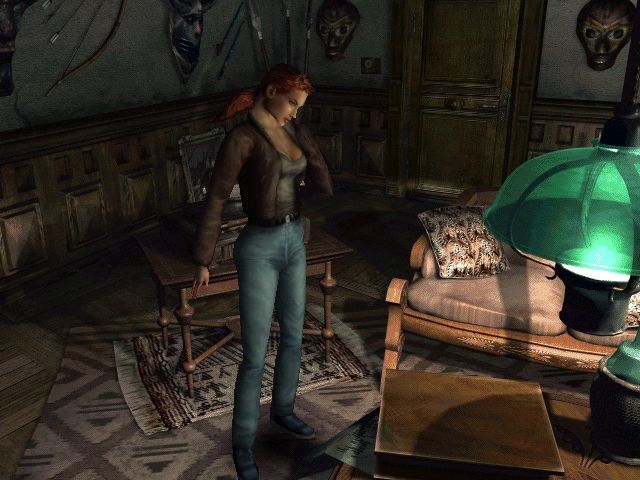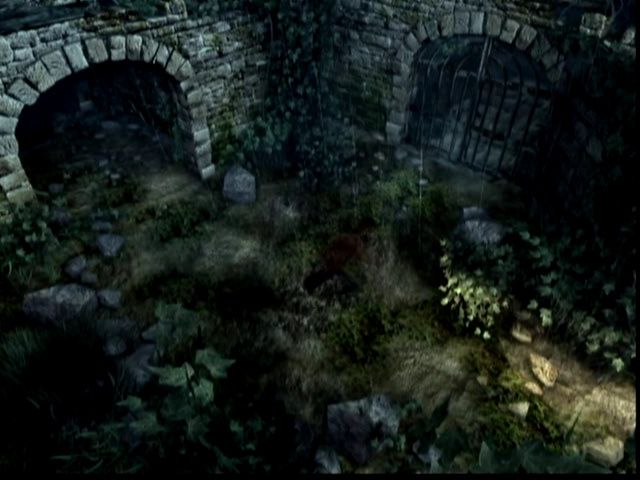Retro Replay Review
Gameplay
Alone in the Dark: The New Nightmare builds on the classic survivor-horror formula by giving players an option to experience two distinct perspectives. Edward Carnby’s route is driven by gunplay and close-quarters combat, while Aline Cedrac’s path leans heavily on environmental puzzles and careful resource management. This split structure not only doubles the runtime but also allows for varied pacing: carnage and adrenaline for Carnby, cerebral tension for Cedrac.
(HEY YOU!! We hope you enjoy! We try not to run ads. So basically, this is a very expensive hobby running this site. Please consider joining us for updates, forums, and more. Network w/ us to make some cash or friends while retro gaming, and you can win some free retro games for posting. Okay, carry on 👍)
The controls remain faithful to the series’ signature tank-style movement, which may feel dated to some modern players but contributes to the creeping sense of vulnerability. Aiming is manual, demanding patience and precision—especially when ammo is scarce, as it often is with Aline, whose storyline forces you to think before you shoot. Finding and using save medallions adds another strategic layer; each safe haven offers limited opportunities to preserve progress, heightening the stakes in every corridor.
Puzzle design in The New Nightmare is both a highlight and a potential stumbling block. Cedrac’s scenarios require deciphering Abkhani tablets, combining items from her inventory, and interpreting cryptic clues scrawled in musty journals. These challenges feel rewarding when solved, but some may prove obscure without frequent back-and-forth exploration. Meanwhile, Carnby’s encounters deliver bursts of action that keep adrenaline high, although the difficulty can spike unexpectedly when cornered by supernatural beasts.
Graphics
Visually, The New Nightmare employs pre-rendered backgrounds paired with real-time character models, preserving the series’ hallmark aesthetic while pushing hardware limits of its time. Environments—from the moss-covered grounds of Shadow Island to the shadowy interiors of decaying mansions—are richly detailed, with dynamic lighting and fog effects that cast long, menacing shadows over every hallway.
Character animations can appear slightly stiff during cinematic transitions, but in-engine cutscenes and scripted moments often compensate with dramatic camera angles and slick visual flair. When monsters lunge from hidden alcoves or ghastly apparitions drift through ruined rooms, the combination of layered sound design and sudden perspective shifts delivers genuine jump-scares.
The user interface is clean and unobtrusive, with item icons and notebook entries displayed in a way that complements the eerie atmosphere rather than cluttering the screen. On higher-end systems, texture filtering and resolution scaling help mitigate some of the rough edges on character faces and debris-strewn floors, ensuring the game remains visually engaging even years after its initial release.
Story
The narrative thrust centers on Edward Carnby, private eye of the paranormal, returning to investigate the mysterious death of his best friend, Charles Fiske, on Shadow Island. Partnered with Aline Cedrac—a redhead linguist whose father vanished under eerily similar circumstances—you gradually uncover the island’s dark history and the ancient Abkhani cult that lurks beneath its surface.
Shadow Island itself becomes a central character: its crumbling estates, sunken ships, and mist-shrouded forests drip with suspense, each location hiding clues to Fiske’s demise and Cedrac’s personal quest. Dialogue snippets, old newspaper clippings, and occult manuscripts expand the lore, while your decisions—such as when to save or which areas to explore first—shape the pacing of revelations.
The dual‐protagonist approach yields two complementary but distinct story arcs. Carnby’s journey is propelled by high-stakes skirmishes with grotesque mutants and relentless pursuit by unseen forces. In contrast, Cedrac’s investigation is slower, more methodical, and steeped in puzzle‐driven exposition. Together, they paint a multidimensional portrait of the island’s relentless grip on anyone who dares to uncover its secrets.
Overall Experience
Alone in the Dark: The New Nightmare succeeds in rekindling the classic fear of the unknown while offering modern enhancements that justify revisiting the series. Its twin protagonists, atmospheric visuals, and blend of action and intellect create a package that appeals both to longtime fans and newcomers seeking a unique horror-adventure.
The game’s difficulty curve can feel uneven: combat sequences may overwhelm unprepared players, and some puzzle solutions border on obscure without ample exploration. However, the scarcity of resources, combined with the manual aiming system and limited saves, fosters a palpable tension that few titles manage to sustain so effectively.
Ultimately, The New Nightmare stands as a testament to the enduring appeal of slow-burn horror. Whether you’re drawn by the thrill of hunting malevolent creatures as Carnby or solving cryptic enigmas with Cedrac, you’ll find hours of immersive gameplay, spine-tingling atmospheres, and a narrative that rewards persistence. For anyone craving an experience that marries classic design with fresh storytelling twists, Shadow Island awaits.
 Retro Replay Retro Replay gaming reviews, news, emulation, geek stuff and more!
Retro Replay Retro Replay gaming reviews, news, emulation, geek stuff and more!









Reviews
There are no reviews yet.